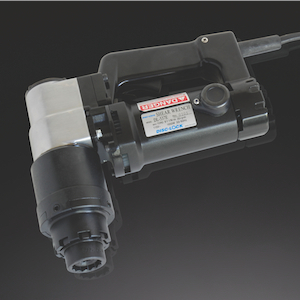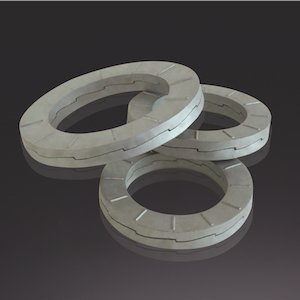 Greg White
Greg White
Vice President
DISC-LOCK International
Culver City, Calif.
www.disc-lock.com
Wind-turbine towers appear to be rising to new heights–literally. As blade lengths increase to capture more wind energy, towers must also reach higher to accommodate the longer blades.
Increased tower dimensions also translate into elevated levels of vibration and stress on tower fasteners, which can lead to loosening and bolted-joint failure. However, fastener failure can be eliminated with a locking washer.
The working principle behind the device is simple: It consists of two washer-shaped pieces that are preassembled (glued pairs), and have inclined cams on one side with a series of radial ridges on the other. On installation, the two cam sides are mated together and placed between the nut and joint material. Under vibration, the nut attempts to rotate loose. But because the cam angle is greater than the bolt-thread-pitch angle, the interlocking cams and non-slip ridges of the washer work together. The resulting jamming effect prevents loosening and further locks the assembly, thereby maintaining joint integrity. The result: a vibration proof fastening system.

Locking washers from DISC-LOCK have a steeper cam angle than the angle on bolt threads. Hence, vibration cannot turn them loose.
The locking washers also offer a fastening system that combines a heavy hex nut and tension-control bolt. Tension-control bolts are replacing conventional high-strength, friction-grip bolts and swaged-collar rivets because they are quick and easy to install with a lightweight electric shear wrench. Guaranteed tension and a visual inspection eliminates the likelihood of operator error and ensures engineers that connections are tightened in accordance with specifications. This bolting system is easily removed and can be reused. Other types of secure bolts are not reusable because they must be burned or cut off for removal, thus destroying the bolt.
The electrically powered shear wrench is lighter than hydraulic wrenches, a distinct advantage when considering tower height and precarious installations. This translates to a one-man operation that trims installation cost. The DISC-LOCK shear wrench uses an outer socket to engage the nut, while an inner socket engages the bolt. The two sockets rotate in opposite directions allowing the nut to turn while the bolt remains stationary. This counter-force operation transfers no torque to the operator, thereby reducing fatigue that can cause carpal tunnel syndrome.
Other interlocking cam fasteners from the company can help maintain bolted-joint integrity on wind farms. These include hex-head bolts for use in blind-hole applications and locking nuts that can be installed with standard tools. Forces that induce other lock nuts to loosen cause locking cam nuts to tighten.

Two sockets on the electric shear wrench work in opposite directions, turning the nut to turn while holding the bolt stationary. Zero torque to the crew member means less stress and fatigue on him.
WPE
Filed Under: Blades, Community wind, Construction, News, Offshore wind, Projects, Turbines







That’s amazing post,i never knew this,thanks for the information.